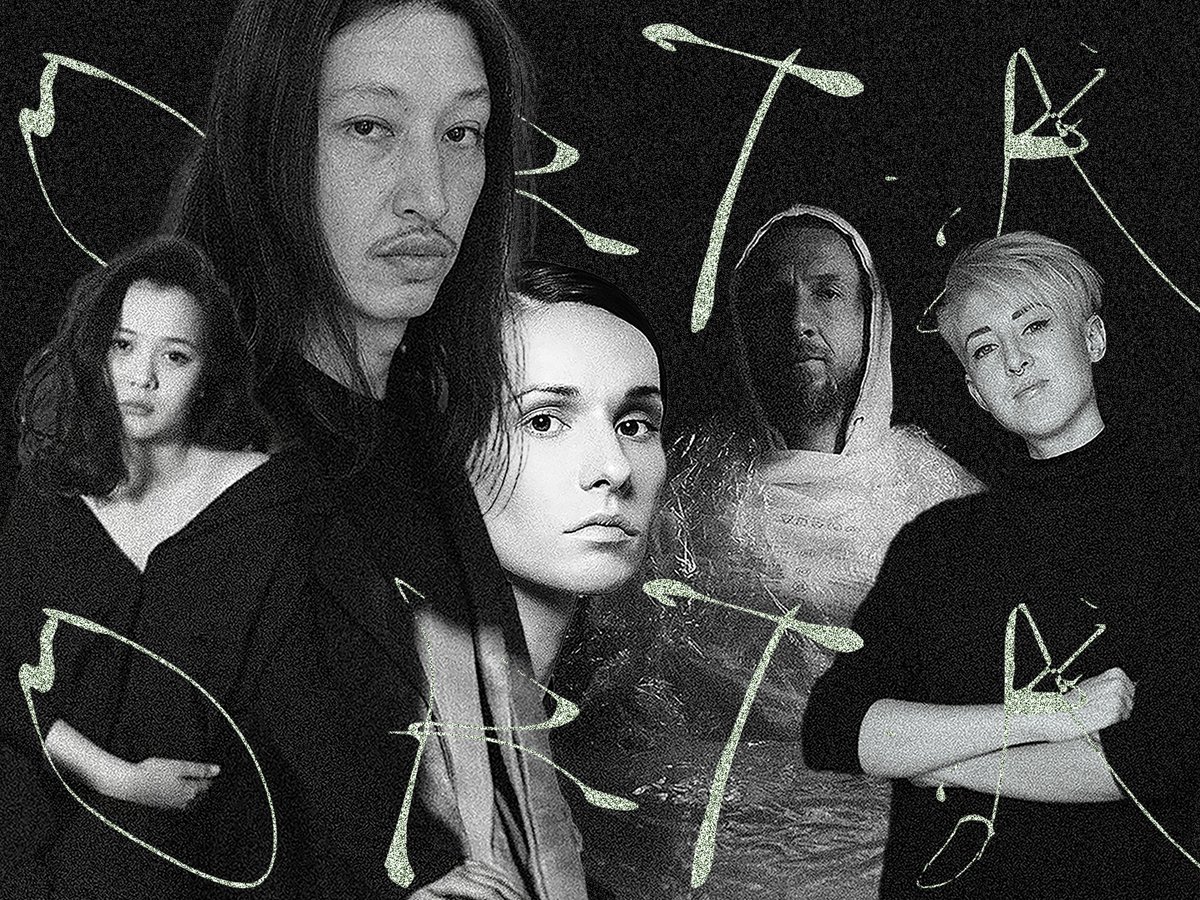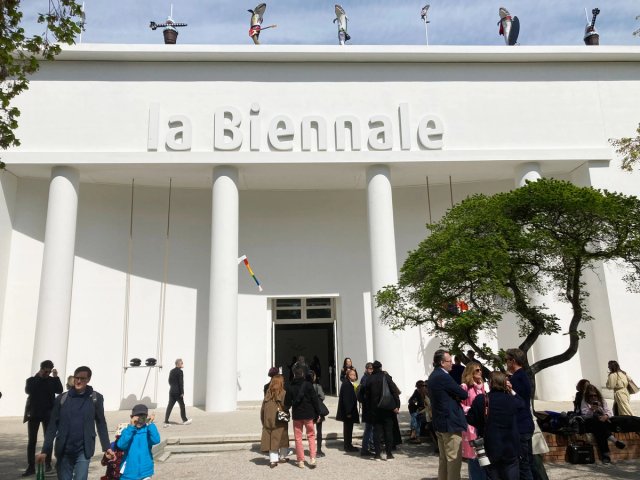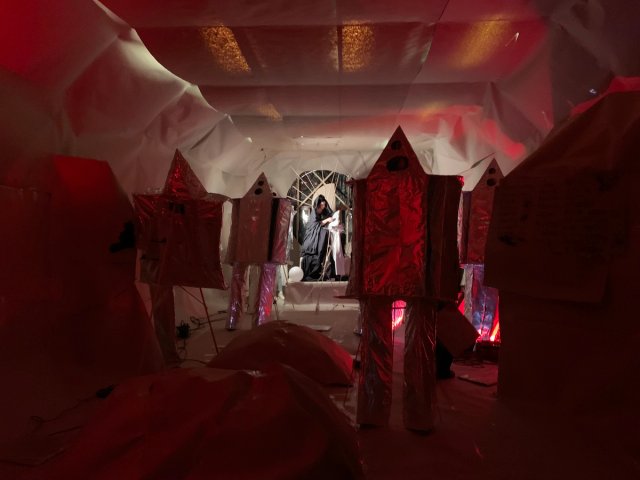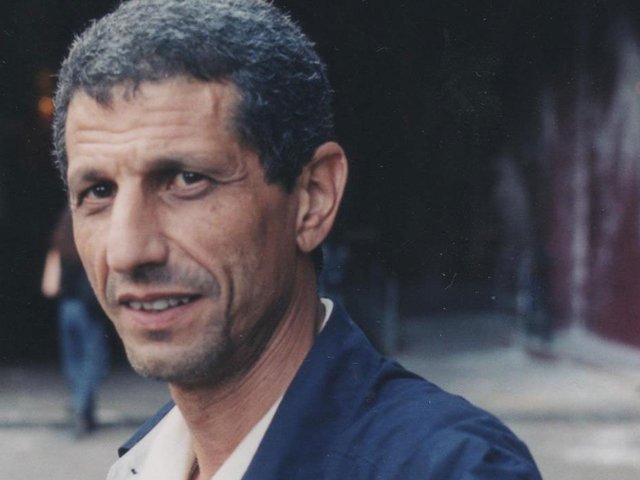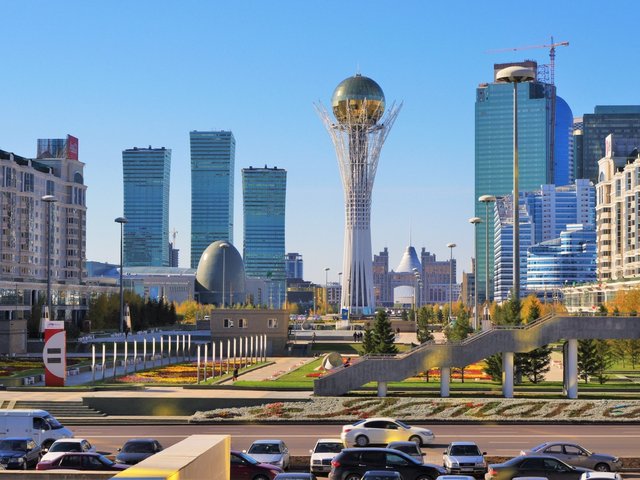At an in-person press conference today at the A. Kasteyev Museum of Arts in the Kazakhstan city of Almaty—tentatively greenlit in the wake of massive nationwide protests—it was announced that the Central Asian country will present its first pavilion at the 59th Venice Biennale this year.
This is not the first attempt Kazakhstan has made at an inaugural Venice pavilion: in 2019, its exhibition was controversially cancelled just two months before the Biennale took place due to “last-minute budget cuts”, with its curators informed of their dismissal via a Facebook post.
“A lot of people were disillusioned and unwilling to stage large-scale art events in Kazakhstan after that,” says Meruyert Kaliyeva, founder of the commercial gallery Aspan in Almaty and commissioner of this year’s pavilion. “But things have changed and we hope to use this as an opportunity to promote the exciting creative scene in Kazakhstan.”
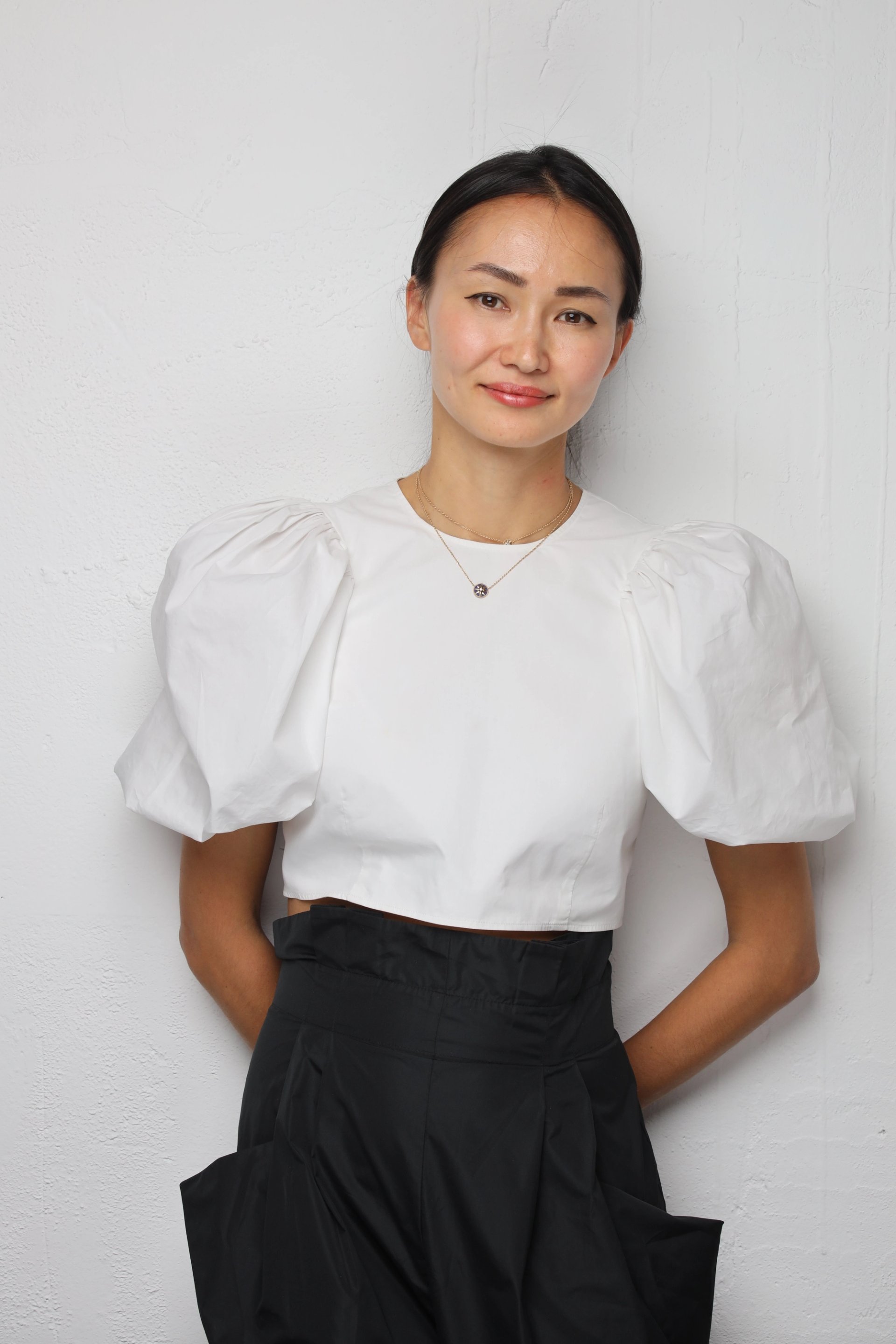
Meruyert Kaliyeva, commissioner of the 2021 Kazakhstan Pavilion. Photo: Anvar Rakishev
The inaugural Kazakhstan Pavilion will see the five-person strong ORTA Collective, formed in 2015, show work in response to the avant-garde 20th-century Russian-Almaty artist, inventor and writer Sergey Kalmykov, who died in obscurity in 1967. Underpinned by Kalmykov’s esoteric philosophy, the Venice exhibition will be located in Spazio Arco in Dorsoduro and will contain a “theatrical” element, although further details are being held until nearer the biennial.
Determined to not repeat mistakes of her country's previous Venice attempts, Kaliyeva says that this year’s pavilion will receive no government funding or support from foreign NGOs. “We didn’t want to factor in political decisions that come when working closely with the government,” she says. Instead it will rely entirely on private donations from the following Kazakhstani entrepreneurs and philanthropic organisations: the Saby Charitable Foundation, Nurlan Smagulov Foundation, the clothing distributor G&G and the Marusya Assaubayeva Foundation.
However, Kaliyeva is still working closely with the Minister of Culture, Dauren Abayev, who has provided her with an official letter of support from the government. Having been appointed last year, Abayev was not involved in the 2019 pavilion controversy.
Second time lucky?
While this year's organisers appear hopeful of a successful pavilion, their predecessors suggest there might still be cause for concern.
"I am not sure how you can have a letter of support from the ministry, while having no government involvement," says the Berlin-based curator Nadim Samman, who co-organised the aborted 2019 pavilion.
Speaking to The Art Newspaper about why the pavlion became mired in controversy, Samman says: “It wasn't an issue of censorship, but straight up corruption. The commissioners wanted to steal our expertise, contacts and strategy, before firing us and doing it themselves."
He adds that “the people of Kazakhstan deserve a national pavilion [...] that will actually reflect its art scene".
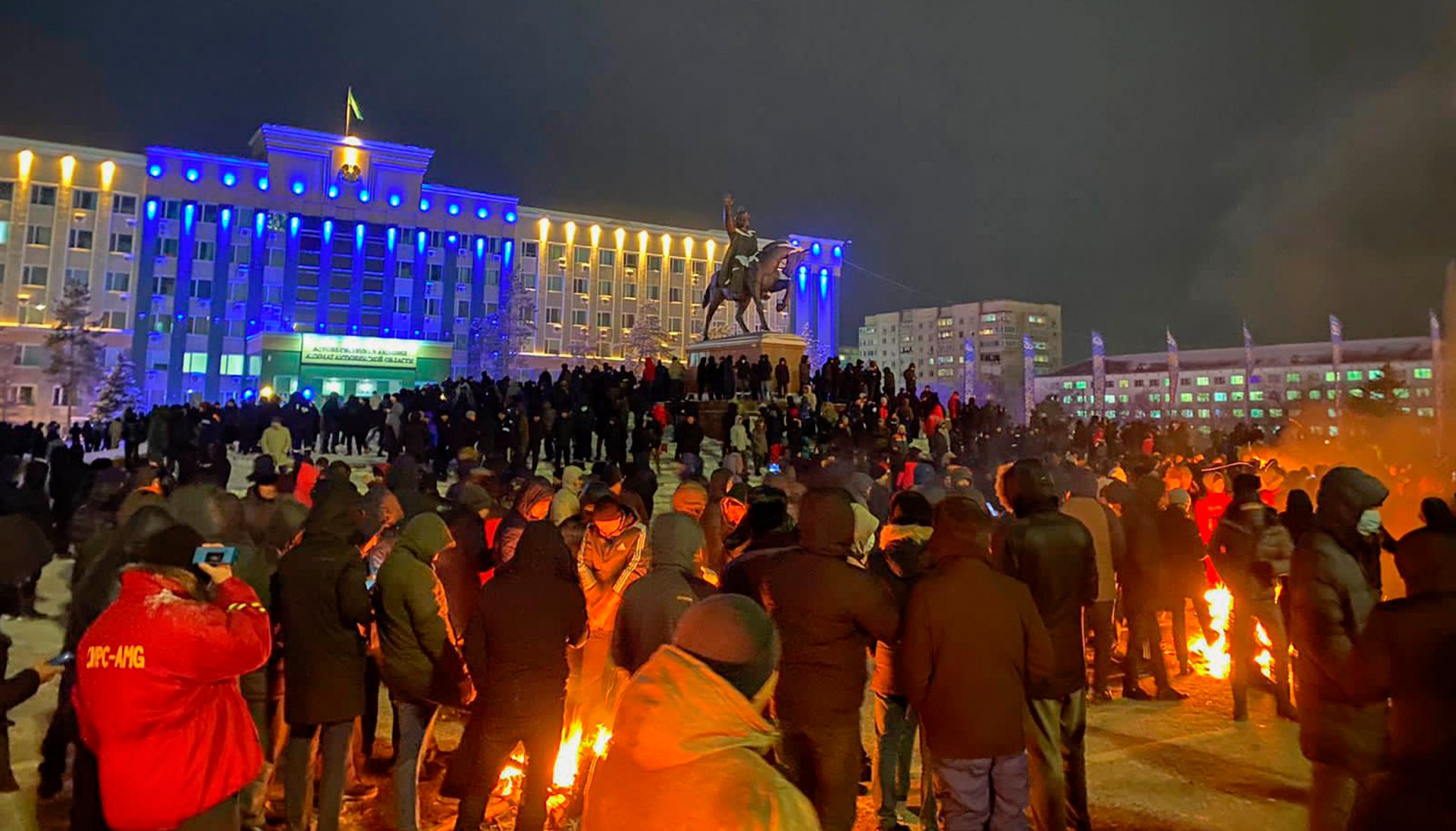
Protesters marching on the central square in Aktobe city, 4 January 2022. Photo: Esetok / Wikicommons
It is a turbulent time for Kazakhstan, which last month saw sweeping civil unrest sparked by peaceful demonstrations against inflated prices of liquid petroleum, used as car fuel by most Kazakhs. While the country has some of the world's largest fuel reserves, this wealth is not shared equally among its people, and violent police crackdowns on protests addressing state corruption has led to the worst bloodshed in the former Soviet republic's 30 years of independence. Official figures place total civilian deaths at 225, though several independent sources report that this is underestimated.
“We couldn’t leave our house for eight days for fear of being shot”, says Rustem Begenov, one of ORTA’s founders. “We were messaging each other under gunfire, hearing the bullets from outside our window—at points we weren’t sure if we were going to be able to actually go ahead with the pavilion”.
Asked whether the Venice exhibition will reflect the bloody social upheaval amid which it was developed, Begenov says that it is "perhaps too soon to fully understand the protests and contextualise them in an art setting". Moreover, he is unsure whether the Venice Biennale is the "most appropriate or sensitive forum" to address the protests, but that he hopes to see shows in Kazakhstan that do so.
And while the political climate in the country remains highly fraught, Kaliyeva says she is hopeful that the recent unrest will prove beneficial for Kazakhstan. "From out of these protests, we are finally waking up to the issues with our society. For the first time in my lifetime, people are hopeful for change."


